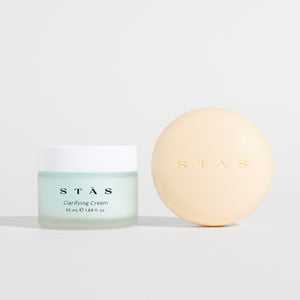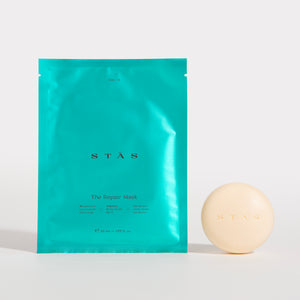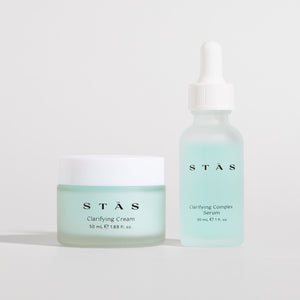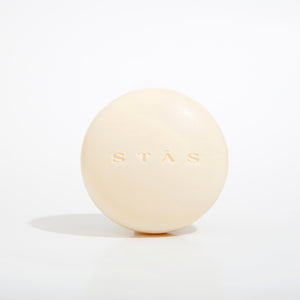The Science of Clear & Bright Skin: How to Fight Dullness & Breakouts
Mar 21, 2025
Looking in the mirror only to find dull, lackluster skin peppered with breakouts can be incredibly frustrating. Many of us have experienced that moment of disappointment, wondering why our skin refuses to cooperate despite our best efforts. The good news? Understanding the science behind these common skin concerns can empower you to make informed choices that transform your complexion from troubled to radiant.
In this comprehensive guide, we'll explore the underlying causes of skin dullness and breakouts, the fascinating connection between these two issues, and most importantly, science-backed solutions that actually work. With the right approach, clear and bright skin isn't just a dream—it's an achievable reality.
Understanding Skin Dullness: More Than Just a Bad Day
Skin dullness isn't simply a matter of having an "off" day—it's a complex condition with specific biological causes. When your skin appears dull, what you're actually seeing is light failing to reflect properly off your skin's surface. This optical phenomenon has several root causes:
- Dead Skin Cell Buildup: Your skin naturally sheds approximately 30,000 to 40,000 dead skin cells every minute. However, when these cells don't detach and shed properly, they accumulate on the skin's surface, creating a rough, uneven texture that scatters light rather than reflecting it evenly.
- Dehydration: When skin lacks adequate moisture, its cells shrink slightly and create a less smooth surface. Well-hydrated skin cells are plump and create a more even surface that reflects light beautifully. Dehydrated skin not only looks dull but also feels tight and may show fine lines more prominently.
- Impaired Circulation: Your blood delivers oxygen and nutrients to skin cells while removing waste products. Poor circulation means less oxygen reaches your skin, resulting in a pale, lackluster appearance. This is why exercise often gives skin an immediate glow—it temporarily boosts blood flow to the face.
- Environmental Damage: Pollution, UV exposure, and other environmental stressors generate free radicals that damage skin cells and impair their function. This oxidative stress accelerates aging and contributes significantly to dullness by disrupting normal cell turnover and repair processes.
The cumulative effect of these factors is a complexion that appears flat, lifeless, and lacks the luminosity associated with healthy skin.
The Science Behind Breakouts: Beyond Surface-Level Understanding
Contrary to popular belief, breakouts aren't simply the result of poor hygiene or chocolate consumption. They stem from a complex interplay of biological factors:
-
Excess Sebum Production: Your sebaceous glands produce an oily substance called sebum that helps protect and moisturize your skin. When these glands produce too much sebum often triggered by hormonal fluctuations pores can become clogged, creating an environment where breakouts thrive.
-
Bacterial Proliferation: Propionibacterium acnes (P. acnes) bacteria naturally live on your skin and generally cause no problems. However, when trapped in an oxygen-poor, sebum-rich environment within a clogged pore, these bacteria multiply rapidly and trigger inflammation.
-
Inflammatory Response: What we see as a red, swollen breakout is actually your immune system responding to bacterial overgrowth. White blood cells rush to the area, causing inflammation as they fight the perceived threat. This inflammatory response is what creates the visible redness, swelling, and sometimes pain associated with breakouts.
-
Compromised Skin Barrier: Your skin barrier functions as a protective shield against environmental aggressors while retaining moisture. When this barrier is compromised due to harsh products, over-exfoliation, or environmental factors, skin becomes more susceptible to bacterial invasion and inflammation, increasing breakout risk.
Understanding this cascade of events helps explain why simply washing your face more frequently isn't enough to prevent breakouts and may actually worsen them by disrupting your skin barrier.
The Surprising Connection: Why Dullness and Breakouts Often Occur Together
It's no coincidence that many people experience both dullness and breakouts simultaneously. These seemingly different skin concerns share several underlying causes:
-
Impaired Cell Turnover: When dead skin cells don't shed properly, they not only create dullness but also can clog pores, contributing to breakouts. This sluggish cell turnover creates a double problem—a lackluster appearance and an environment conducive to breakouts.
-
Inflammation Cycle: Chronic, low-grade inflammation can manifest as both dullness and breakouts. Inflammation disrupts normal skin function, impairs barrier repair, and creates the redness associated with active breakouts.
-
Dehydration Effects: Counterintuitively, dehydrated skin often produces more oil as the body attempts to compensate for moisture loss. This excess oil production can contribute to breakouts while the underlying dehydration causes dullness.
This interconnection explains why addressing both concerns simultaneously, rather than treating them as separate issues, often yields the best results.
Nature's Solution: Effective Ingredients for Clear, Bright Skin
Science has identified several natural ingredients that effectively target both dullness and breakouts without harsh side effects:
-
Hyaluronic Acid: This molecule can hold up to 1,000 times its weight in water, making it a powerful hydrator that plumps skin cells and improves light reflection. Proper hydration also helps regulate oil production, potentially reducing breakout frequency.
-
Botanical Anti-inflammatories: Ingredients like chamomile and calendula (marigold) contain compounds that calm inflammation, reducing redness and irritation. These gentle botanicals soothe troubled skin without causing dryness or irritation.
-
Natural Antibacterials: Tea tree oil contains terpenes that help control bacteria associated with breakouts. Unlike harsh chemical antibacterials, tea tree oil works without completely disrupting the skin's beneficial microbiome.
- Gentle Exfoliants: Willow bark extract naturally contains salicylic acid, which helps loosen dead skin cells and clear pores. It provides antioxidant benefits while gently exfoliating, improving both clarity and brightness.

The STAS Clarifying Complex Serum exemplifies this science-backed approach, combining these four plant powerhouse ingredients in a concentrated formula that addresses both dullness and breakouts simultaneously. This non-drying serum harnesses nature's intelligence to inhibit bacteria, clear pores, and calm redness while drenching skin with superior hydration. By supporting a healthy skin barrier, it leaves skin looking smooth, bright, and youthful, addressing both immediate concerns and long-term skin health.
Your Daily Routine for Clear, Bright Skin
Achieving and maintaining clear, bright skin requires consistency. Here's a science-backed routine that incorporates proven principles:
Morning Routine:
- Cleanse gently with a non-stripping cleanser to remove overnight oil buildup without compromising your skin barrier.
- Apply an antioxidant serum to protect against environmental damage that contributes to dullness.
- Hydrate with a lightweight, non-comedogenic moisturizer containing hyaluronic acid.
- Finish with broad-spectrum SPF 30+ sunscreen to prevent UV-induced inflammation and damage.
Evening Routine:
- Double cleanse to thoroughly remove makeup, sunscreen, and environmental pollutants.
- Apply a treatment serum containing anti-inflammatory and antibacterial ingredients (like the STÄ€S Clarifying Complex Serum).
- Moisturize with a barrier-supporting formula to enhance overnight repair.
Weekly Treatments:
- Use a gentle chemical exfoliant 1-2 times weekly to remove dead skin cells without physical scrubbing.
- Apply a hydrating mask once weekly to boost moisture levels and enhance radiance.
Beyond Skincare: Lifestyle Factors for Radiant Skin
While topical treatments are essential, internal factors significantly impact skin health:
-
Nutrition: Foods rich in antioxidants, omega-3 fatty acids, and zinc support skin repair and reduce inflammation. Colorful fruits and vegetables, fatty fish, nuts, and seeds should be staples in a skin-supporting diet.
- Hydration: Drinking adequate water ensures your body can efficiently deliver nutrients to skin cells and remove waste products. Aim for at least eight 8-ounce glasses daily.
- Sleep Quality: During deep sleep, your body increases blood flow to the skin and produces growth hormone, which is essential for repair. Prioritize 7-9 hours of quality sleep nightly.
-
Stress Management: Chronic stress triggers cortisol production, which can increase oil production and inflammation. Regular meditation, yoga, or other stress-reduction practices benefit both mind and skin.
The Path to Radiance: Patience and Consistency
Transforming dull, breakout-prone skin into a clear, radiant complexion doesn't happen overnight. Cell turnover takes approximately 28 days in young adults and even longer as we age. Give any new routine at least one full skin cycle before evaluating results.
Remember that clear, bright skin reflects overall health both physical and emotional. By addressing the root causes of dullness and breakouts rather than just their symptoms, you're investing in long-term skin health that will continue to reward you with a radiant complexion for years to come.
With science-backed ingredients, consistent care, and lifestyle support, you can break free from the frustration of dull, troubled skin and reveal the natural luminosity that lies beneath. Your journey to clear, bright skin starts with understanding—and continues with action.







